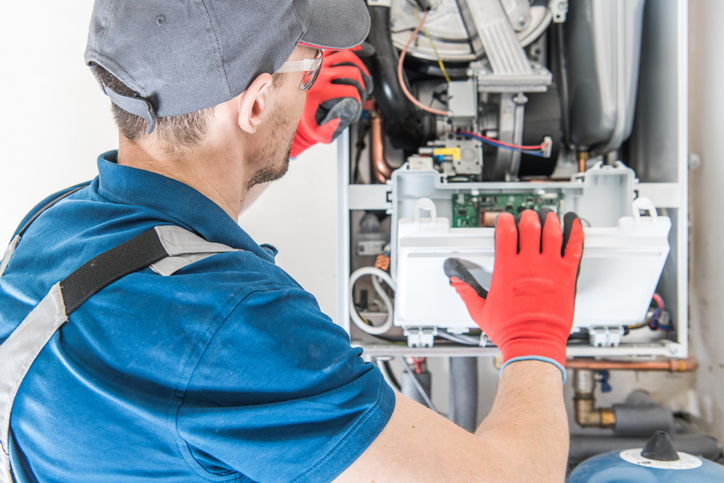
Evaluating the Efficiency of Your Furnace
You roll out of bed in the morning, stretch, rub your eyes, and head directly for the thermostat (unless you’re fortunate enough to have a programable one). Mere minutes later you sip your morning beverage in a cozy, warm, room. Your modern furnace provides fast, affordable heat and improves your indoor air quality. Or does it? How can you tell if your furnace is underperforming? If it is, how do you increase the efficiency of this important appliance? Following is information on how to determine if your furnace is operating efficiently and what to do if it’s not.
What is Furnace Efficiency?
Furnace efficiency is measured via the AFUE standard (Annual Fuel Utilization Efficiency) which is calculated by dividing the annual heat output by the annual energy consumption to find a percentage rating. The minimum AFUE rating required for modern furnaces is 80%. High-efficiency furnaces may operate between 90 and 98.5 percent efficiency. Older style furnaces, boasting a continuous pilot light, often operate at 70% efficiency or less. To determine the AFUE rating of your furnace, check the faceplate. If it’s not there, locate the serial and model number and check with the manufacturer. It’s important to understand that the AFUE rating is based on the efficiency of the furnace when installed. This rating will diminish if the appliance is poorly maintained and naturally decreases with age.
Assessing the Efficiency of Your Furnace
There are many signs that a furnace is operating inefficiently.
- Increased bills: An inefficient furnace causes spikes in heating costs that cannot be explained by weather conditions and/or usage.
- Steep repair costs: When the cost of repairing your furnace reaches ½ or more of the cost of a new system, you have an inefficient furnace that needs replacing.
- Uneven heating: An inefficient furnace does not evenly distribute heat throughout a house, resulting in cold spots.
- Strange Noises: An efficient furnace operates quietly. Popping, rattling, screeching, humming, whining, clicking, and/or groaning indicate inefficiency and the need for repair or replacement.
- Old age: An electric furnace may last from 20 to 30 years, while a gas furnace may operate for 15 to 20 years. As your furnace ages, it will diminish in efficiency. Check the age of your furnace.
- A build-up of soot/dust near the grille/registers indicates that your furnace is producing too much carbon dioxide and is no longer operating efficiently.
- A yellow flame accompanied by an odour indicates gas leakage and/or improper combustion. An efficient furnace produces a blue flame.
Steps for Enhancing Furnace Efficiency
- Change the filter regularly: A filter clogged with pollen, dust, and debris restricts airflow, making the furnace work harder, consuming up to 15% more energy, and decreasing the lifespan of the appliance. If you’re using 1 to 2-inch filters, replace them every 1 to 3 months. 3 to 4-inch filters should be replaced every 6 to 9 months, while 5 to 6-inch filters require replacement every 9 to 12 months.
- Do annual maintenance: A tune-up can increase furnace efficiency by up to 40%! Proper maintenance prevents breakdowns, reduces furnace repairs, extends the life of the appliance, and meets warranty requirements. Have a trained technician do a tune-up once a year.
- Install a programable thermostat as it maximizes efficiency and reduces heating costs. Program your thermostat to accommodate your household practices. There is no need to keep the temperature high when no one is home or everyone is sleeping.
- Clean vents and registers: Blocked vents/registers limit the ability of the furnace to disperse heat. Make sure drapes and furniture are not obstructing the vents.
- Clean and seal ductwork: Clean the ductwork to remove dirt, dust mites, microbes, insect droppings, and pollen. Seal ducts to ensure heat is not escaping. Leaking ducts cause up to 30% heat loss!
- Balance humidity: 40 to 60% humidity is the ideal level for cold weather, ensuring your home feels warm, preserving wooden furniture, and reducing asthma attacks, sinus infections, and allergies.
- Know when it’s time for a new furnace: Upgrading to a more efficient furnace saves on heating costs and ensures your home is comfortable. Check the age of your appliance. If it’s 15 years or older, you may need a new furnace. An HVAC expert can help.
How an HVAC Expert can Help
If you desire the best performance and efficiency from your furnace, enlist the help of an HVAC expert. A trained furnace technician inspects your furnace for signs of wear and tear that compromise its efficiency. They can tell you the AFUE rating and perform a combustion efficiency test, letting you know the actual amount of heat delivered in comparison to the fuel used. The technician checks for obstructions and/or leaks in the ducts and provides maintenance tips to improve efficiency. They detect potential issues, recommend solutions, save you money, and improve your home’s comfort.
Looking for an HVAC expert to help you improve your furnace’s efficiency? Need a new HVAC system for your home? Reach out to McMillian Air. We design, install, and service heating, ventilation, air conditioning, humidity control, and indoor air quality systems. We carry American Standard and Mitsubishi products. Look to us for quality service and competitive pricing.

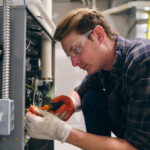

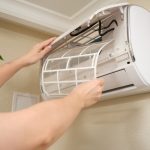
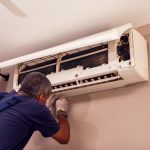
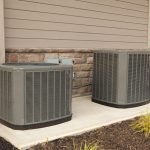


0 comments